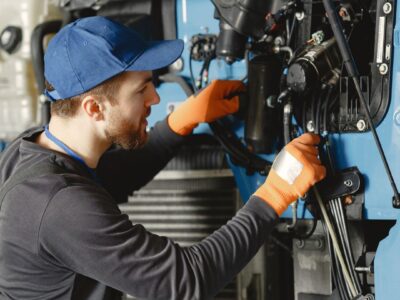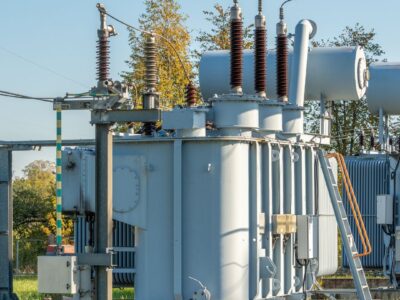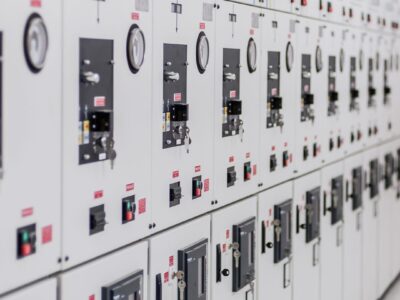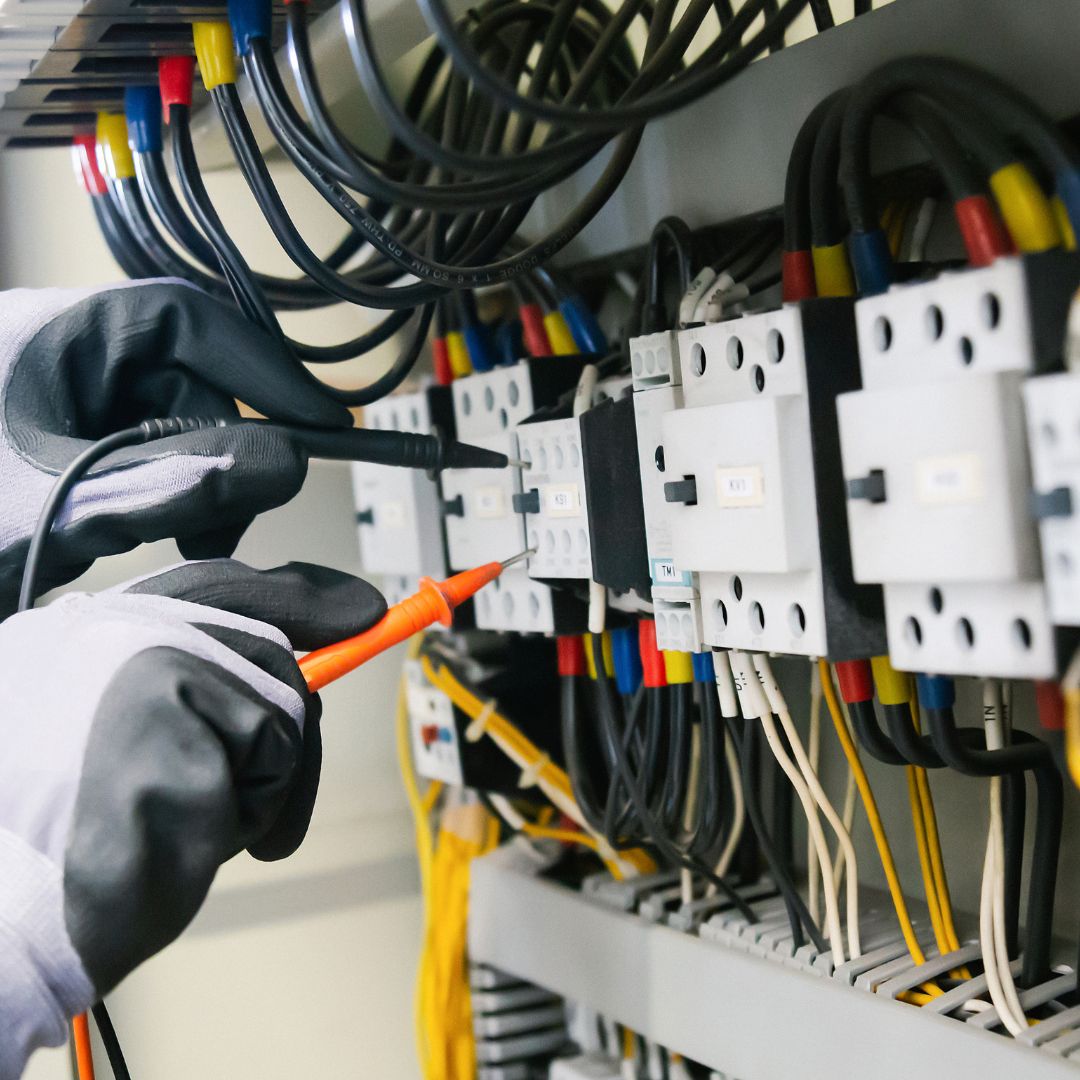SANS 10142-1: 2024 Edition 3.2
Course Synopsis SANS 10142 is a national adoptable standard for the safe installation of electrical wiring in South Africa. Since 1978 to date, SANS 10142-1 for low voltage installation has undergone a series of amendments. In March 2012, edition 1.8 …
Overview
Course Synopsis
SANS 10142 is a national adoptable standard for the safe installation of electrical wiring in South Africa. Since 1978 to date, SANS 10142-1 for low voltage installation has undergone a series of amendments. In March 2012, edition 1.8 was published. However, with the advent of electric vehicle charging stations, UPS equipment and PV installations off-grid or on-grid, secondary supply network or distribution system, and electrical installations in hazardous locations, a new edition 2 was published in March 2017. In July 2020, edition 3 was released, and here, SANS10142 is now classified into four parts (Part 1, Part 1-1, Part 1–2 and Part 2). In 2021 edition 3.1 was published with updates on some installation requirements, verification and certification.
Published in July 2024, the new edition 3.2 brings significant updates, including changes in referenced standards and requirements for voltage drop, busbars, earthing, earth continuity conductor, and more. Notably, the previous requirement of 60 W for each lamp for load calculation has been removed.
As an electricity user, it is your responsibility to ensure compliance with the latest edition, 3.2, of SAN10142-1-2024. This commitment to safety and best practices is crucial in the field of electrical installations.
This two-day intensive and interactive course equips participants with practical knowledge. It provides an in-depth review of the new edition of SANS 10142-1-2024, focusing on the need to protect people, animals, and property from electrical hazards. The course covers installation requirements for conductors, cables, distribution boards, circuit breakers, fuses, switchgear, transformers, Motors, PV installations, earthing, bonding, and protection. It also delves into testing, measurement, verification, and certification of low-voltage installations, ensuring participants are well-prepared and confident in their roles.
Key benefits of attending this comprehensive, descriptive and interactive course are:
- know if what you are doing is currently compliant with the new edition of the standard
- Understand the intricacies of the Wiring Code
- Imbibe knowledge of cable selection and installation methods
- Comprehend selection and installation requirements of Distribution boards, Busbars, circuit breakers, disconnecting devices and fuses
- Understand the new requirements for an electric vehicle charging station, UPS equipment, off-grid or on-grid PV installations, secondary supply network or distribution system, electrical installations in hazardous locations etc.
- Comprehend concise knowledge of LV earthing principles and concepts
- Be aware of Installation requirements of Electric Motors, Pumps, Water heaters, cooking appliances, HVAC
- Grasp Inspection, testing and commissioning procedures of electrical installations
Who should attend this event?
- Electrical Engineers/Technicians/Technologists
- Electrical reticulation supervisors/technicians,
- Distribution system planners,
- Maintenance managers,
- Power system consultants,
- Building planners/managers.
- Electrical workers
- Electrical contractors
- Certified engineers (GCC holders)
Course Outline
Day 1 Module 1
- Introduction
- Scope and exclusions of SAN10142-1
- What has been changed or added in SANS10142-1-2024 edition 3.2
- Updated referenced standards.
- Requirements for voltage drop, busbars, earthing, earth continuity conductor, Maximum safe duration (in seconds) of AC touch voltage etc
- The great 60 W for each lamp for load calculation has gone
- Multiplication factor FV for 3phase
- Volt drop calculation changes
- General electrical installation safety principles
Day 1 Module 2
Selection and installation requirements of cables and conductors
- General circuit arrangement
- Current-carrying capacity of conductors and cables
- Methods of cable installation
- Application of Derating factors
- Voltage drop
- Cable selection calculation
- Installation of conductors and cables
- Selection and use of wireways- conduits, ducting & trunking
Day 1 Module 3
Selection and installation requirements of Distribution boards, Busbars, circuit breakers, disconnecting devices and fuses
- Fault level calculation and selection of Distribution boards
- Prospective short circuit current calculation in AC circuits
- Prospective short circuit current calculation in DC circuits
- Busbars
- Disconnecting devices in DB board
- Mounting of Switchdisconnectors and Distribution board
- Circuit-breakers used as main or local switch-disconnectors
- Circuit-breakers used as switches
- Disconnection of neutral conductors
- Disconnecting devices for equipment
- Main switch-disconnectors
- Fuse installation
Day 1 Module 4
Protection requirement and protective equipment of electrical installation
- Overcurrent protection
- Overload protection
- Short-circuit protection
- Series-connected (cascaded) systems
- Earth leakage protection
- Surge protection
- Course activities
Day 1 Module 5
Earthing, bonding and lightning protection
- Introduction to earthing
- Objectives of earthing
- Earthing Fundamentals
- Consumer’s earth terminal
- Material for earthing application
- Earth continuity conductors
- Minimum size and maximum length of ECC
- Earth electrodes
- Earthing of exposed conductive parts
- Earthing of the neutral of combined sources
- Bonding conductors
- Parts to be bonded
- Guidelines to determine surge protection requirements for residential, commercial and industrial buildings
Day 2 Module 6
Installation requirements of Electric Motors and Pumps
- Motor control components
- Motor protection and control requirement
- Submersible motors
- Motor starters
- Installation requirement of Water pumps
Day 2 Module 7
Installation requirement for Water heaters, cooking appliances, HVAC
- Bonding and earth leakage requirements of water heaters
- Installation requirement of cooking appliances such as built-in stoves, oven hobs e.t.c
- Circuits of cooking appliances
- Stove couplers
- HVAC circuit requirement
- Underfloor heating installation requirement
Day 2 Module 8
Installation requirement of Lighting and socket outlets
- Lighting circuits
- Luminaires
- Suspended luminaires
- Lamp holders
- Socket-outlets
- Mixed loading of circuits
- Positioning of socket-outlets
Day 2 Module 9
Installation requirements for alternative supplies such as electrical supply derived from static inverters used with UPS equipment, off-grid or on-grid PV installations, LV generating sets, diesel generators, wind turbines, hydropower plant e.t.c
- Notices, indicators and colour coding
- Assessment of Prospective short-circuit current and prospective eath-fault current
- Changeover device
- Earthing requirements of alternative supplies
- Installation requirements for UPS and off-grid or on-grid PV installations
Day 2 Module 10
Special installations or locations
- Bathrooms, showers, spas, etc.
- Bathrooms, showers, spas,
- Zones
- Degrees of protection
- Submersible and non-submersible pumps
- Construction and demolition site installations
- Agricultural and horticultural locations
- Medical locations
- Temporary installations
- Telecommunication d.c. power systems
Day 2 Module 11
Electrical installation requirement in hazardous locations
- Introduction to hazardous locations
- Classifications of hazardous locations
- Selection and installation of equipment in hazardous locations
Day 2 Module 12
Verification and certification of installations
- Who must have a Certificate of Compliance
- What is a Certificate of Compliance
- What is a test report?
- Who issues a CoC?
- What happens when work is done on the installation
- What about if there is an alteration or addition to existing installations?
- What if there is a change of ownership (selling of property)?
- Who is this registered person?
- How do you become a registered person?
- Inspection
- When to inspect
- What to inspect
- Testing of electrical installation
- Testing of continuity of earthing, the resistance of ECC and ring circuits
- Measurement of earth fault loop impedance and PSCC
- Elevated voltage on supply neutral
- Insulation resistance test
- Voltage measurement at the point of control at no load and on load
- Voltage measurement at available load
- Testing of Earth leakage unit
- Polarity and phase rotation test
- Neutral loop impedance test in TN-S, TN-C and TT–J. 2.6
- Test report
- COC Format
- Inspection and test report requirements for electrical installations in hazardous locations
- Additional test report for secondary distribution, medical and hazardous locations
- Course exercise




